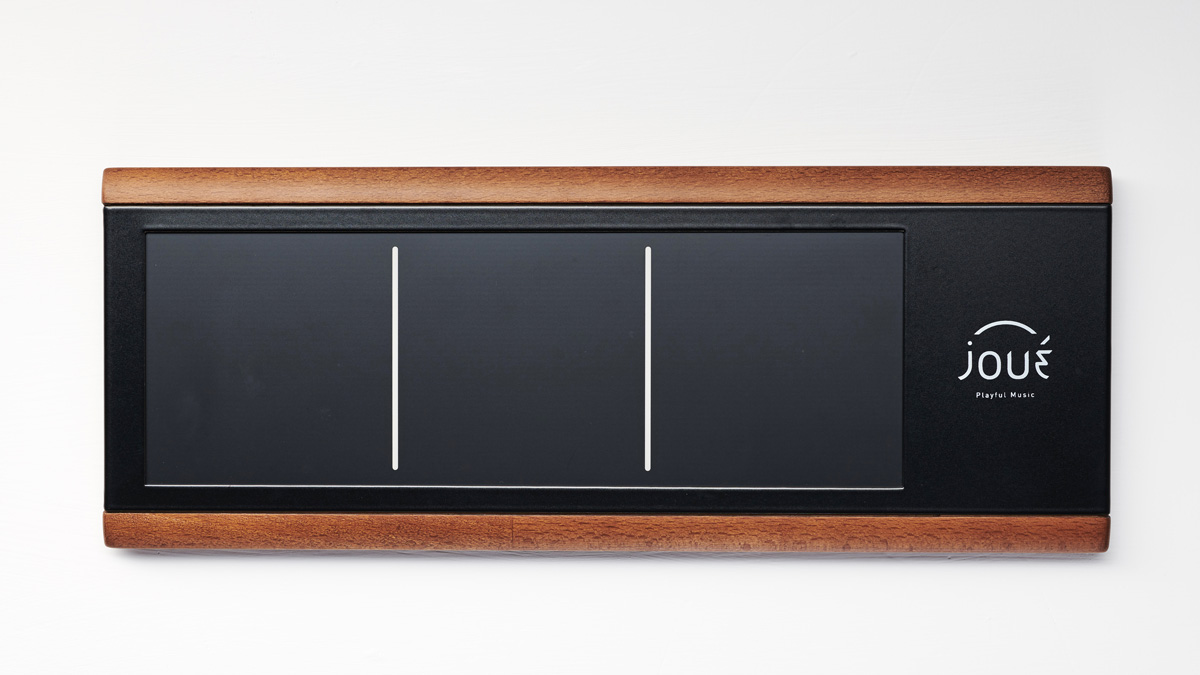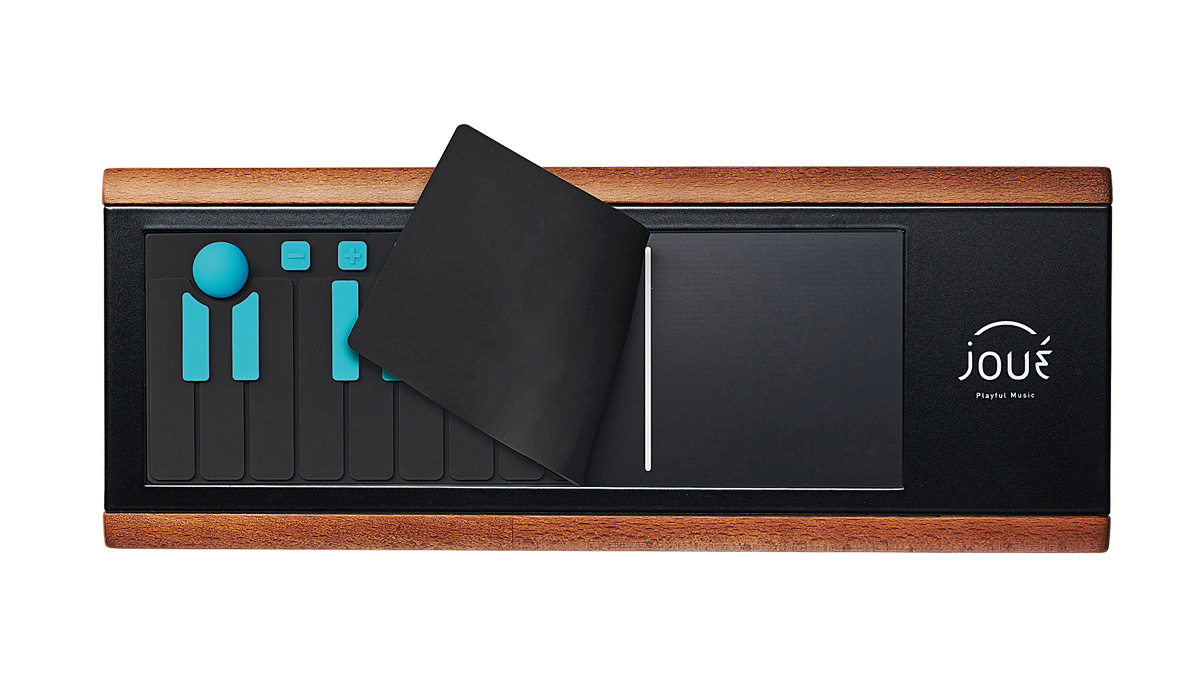MusicRadar Verdict
A refreshingly different yet versatile controller that will inspire you in whole new ways.
Pros
- +
It’s built solidly, works reliably and is a lotta fun!
- +
Easy to use.
- +
Solidly built and can be powered via USB or any 5v adaptor. Portable too!
Cons
- -
Only available in a 25-key version currently.
MusicRadar's got your back
We’re keen followers of MPE-capable MIDI devices and have had the pleasure of reviewing products from Roli, Roger Linn, Expressive E and now Joué.
Externally, the ‘naked’ Joué board is a thing of simplistic beauty with its natural wood base and edges, high quality black metal panel/surround and the all-important triple-zone ‘polyphonic sensor’ into which the current crop of nine ‘magic modules’ magnetically attach. Using RFID (radio waves), the Joué board magically senses which modules are attached and this technology also allows the modules to be swapped out on the fly and combined so that (for example) you can combine drum pads with touch strips and a fretboard!
Each module also transmits standard MIDI, MPE, poly aftertouch and velocity, so it’s fair to say the Joué is very expressive and versatile! The Joué board can be powered from your computer over USB or via a 5v USB power adaptor, and you get a ‘Re-Connect’ cable which carries power to the Joué and DIN MIDI to hardware all at once.
Here we’re focusing on a new module called ‘Grand Clavier’ (‘big keyboard’ in English - though perhaps ‘Petit Clavier’ is more appropriate as this is a very small two-octave, 25-key module)! This module is made of silicone rubber which is smooth yet grippy; pretty much the perfect combo for playing accurately and smoothly simultaneously. We mmediately found it more natural-feeling than Roli’s ‘keywave’ keyboards (particularly for chords). The keys are nicely spaced, and the black notes (green here) don’t interfere with normal technique, so there’s no readjustment needed.

We’re also pleased to report that the default touch sensitivity setting is spot on and the poly aftertouch and vibrato worked as they should - you can glide smoothly across the keyboard without glitches. However, if you do want to adjust the touch or other settings you can do this in the very elegant Joué editor which is bundled free - you can also create and save your own presets to work with different software plugins and hardware instruments.
It’s all very easy to set up and the free included soundset for UVI workstation nicely shows how versatile this device is when used with MPE-capable software. There are some realistic and eminently controllable sounds included, ranging from synths through to acoustic stringed instruments (and you also get a voucher for UVI Falcon). Let’s not forget that there are several other hardware controls onboard too, including a 3D raised bubble (which defaults to filter cutoff), octave up/down buttons, a long touch bar and two further buttons which default to sustain and gliss on/off. These are all easily re-assigned to any MIDI cc of your choice in the editor.
As a studio-based or portable travelling controller, this really is superb - it feels and looks great, it’s versatile, works well and seems built to last. Now where’s that five-octave version please!?
“I used everything I knew about music”: How Green Day exceeded expectations with their most ambitious song
YouTube just added AI tools that makes musicians, library music and video editors redundant
“Every one of them said yes without hesitation": Hank Marvin and Roger Taylor have just remade a '60s classic for charity










